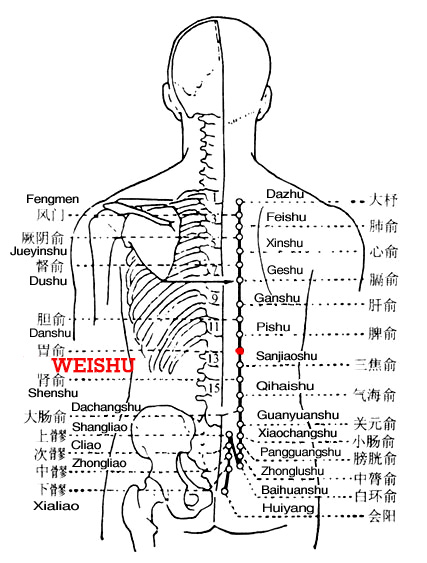Pohu BL42: Nomenclature, Location, Functions, Indications

Nomenclature:
Po: spirit Hu: door
The lung stores the spirit. Pohu is at the level of feishu (BL13), like a door for the Qi of the lung.
Point: BL42
Chinese Name: 魄户
Name: Pohu
English Name/Meaning: Door of the Corporeal Soul
Pinyin: pò hù
Han Geul 한글: baek ho 백호
Romaji: haku ko
Vietnamese:Phách hạ
Location:
3 cun lateral to the governor vessel, at the level of the lower border of the spinous process of the third thoracic vertebra, on the spinal border of the scapula.
Functions:
- Opens the lungs and regulates the lung Qi.
- Calms dyspnoea and suppresses cough.
- Soothes the corporeal soul.
Indications of Pohu:
Pulmonary tuberculosis, hemoptysis, dry cough, asthma, neck rigidity, pain in the shoulder and back.
Sadness, distress,depression, suicidial thinking.
Method:
Oblique insertion towards lateral 0.3 to 0.5 cun.
Remarks:
Meeting point of bladder and small intestine channel.
Precautions:
Deep perpendicular or needling in a wrong direction carries a substantial risk of causing a pneumothorax.


